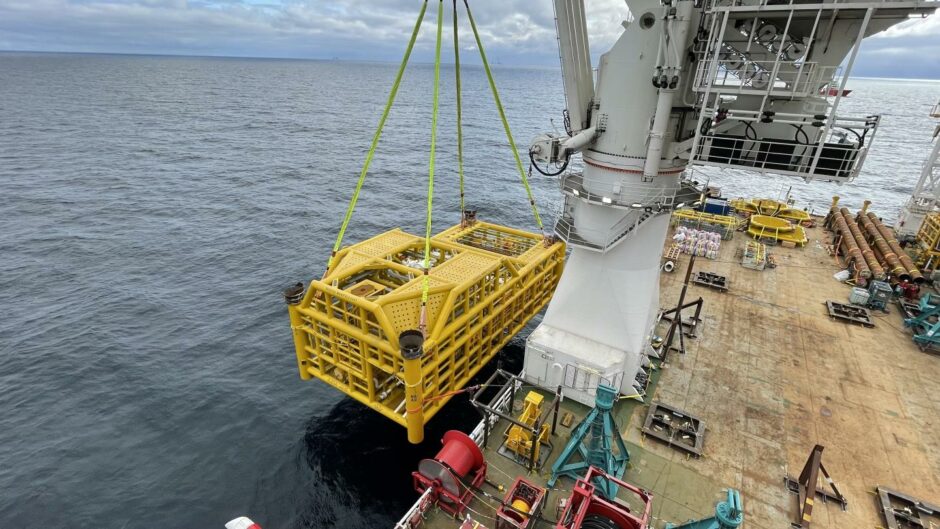Neptune and its partners have completed installation of a subsea manifold and umbilical at the Seagull project, in the central North Sea.
TechnipFMC, working under the Neptune Energy Alliance Agreement, was in charge of construction activities using its CSV Deep Star vessel.
The high-pressure, high-temperature field, estimated to hold around 50 million barrels, is being developed as a subsea tieback to BP’s ETAP platform.
Neptune, as operator, holds 35% of Seagull, while BP has 50% and Japex has 15%.
The TechnipFMC scope included the installation of the 350-tonne Seagull manifold, the pull-in and installation of a 10.5-mile control umbilical linking to ETAP, and the installation of a wye structure, as well as other associated operations.
Production from Seagull will be delivered via a new 3-mile subsea pipeline, which will tie the manifold to the existing Heron pipeline. Produced gas will come onshore via the Central Area Transmission System (CATS) processing terminal at Teesside.
Liquids will flow via the Forties Pipeline System to the Kinneil Terminal at Grangemouth.
Production is expected to reach 50,000 barrels of oil equivalent per day (gross).
Drilling at the field began in January 2021, and the Gorilla VI jack-up rig, operated by Valaris, will drill four wells over the course of an 18-month campaign.
Neptune bought its stake in the project from Apache in 2018 and made a final investment decision in March 2019, though the project has suffered delays of 12-15 months due to COVID-19.
It initially hoped to bring the field on-stream by the end of 2021, but has pushed first production back to early 2023.
Commenting on the successful installation, Neptune UK managing director Alexandra Thomas said completion of the work was “a key achievement” and prepares the subsea infrastructure for the future tie-in of the production system.
Recommended for you

 © Supplied by Neptune Energy
© Supplied by Neptune Energy